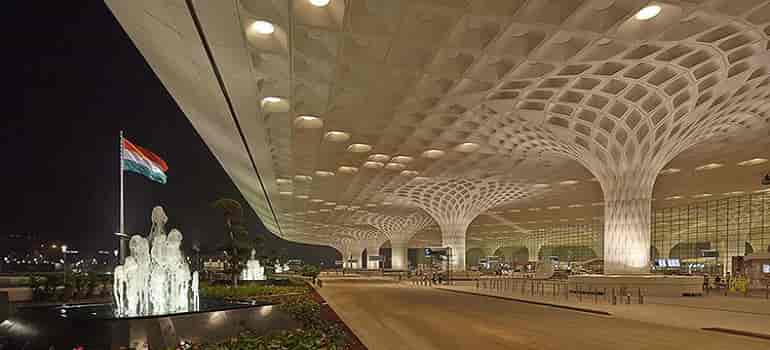
Greenhouse gas (GHG) has long since had a significant impact on the environment resulting in a series of disasters due to climate change. While COVID-19 remains the most impactful event since 2020, the year also saw phenomenon like bushfires, flash floods, earthquakes, locust swarms and cyclones to name a few occur across the globe.
The need to monitor and control GHG emissions across the various industries has never been more important. Aviation is a significant contributor to carbon and GHG emissions in the environment, with notable environmental sustainability implications, mostly arising from airline management facilities such as airports. Thus, airports must identify contributing factors from daily operations and lay out efficient measures and strategies to reduce GHG emissions.
Since its inception, Chhatrapati Shivaji Maharaj International Airport (CSMIA), has always focused on carbon neutrality, emission reduction and climate action and has integrated emission-related concerns within its operational agenda. Understanding the potential risks of GHG emissions on the climate, the airport has aligned its efforts to the UN Sustainable Development Goals (SDGs).
CSMIA has set a goal to reduce the emissions resulting from direct fuel consumption and indirect energy purchase for operations and adopted a target to reduce its Scope 1 & Scope 2 carbon emissions per passenger by 33-35% against its baseline year of 2014; this target is also in line with Indian National Disclosures (INDC) commitments of the country.
CSMIA has also put a Carbon Roadmap and a Carbon Management Plan to streamline its processes to achieve targets of emissions reduction. The airport has a climate change strategy that provides a robust framework to progress towards reducing its carbon footprint. The objectives of the strategy are presented in a phased manner consisting of 4 steps/phases – Measure, Manage, Reduce and Communicate.
As part of the overall strategy to reduce its GHG emissions, CSMIA focuses on continually improving its Energy Management System (EMS), identifying critical energy consumption points and principal areas to reduce energy consumption. Practicing the use of low carbon-intensive fuel, the airport has added CNG powered vehicles to its fleet and has allowed the operation of only electric motor vehicles in the baggage operations area and inside terminals.
CSMIA has encouraged the use of Bridge Mounted Equipment (BME) providing Pre- Conditioned Air (PCA) & Fixed Electric Ground Power (FEGP). These BMEs are currently available for use at all operational aerobridges at the terminals. Besides this, the airport is replacing fossil fuel operating forklifts with electric forklifts.
For reducing the impact of aircraft movements, the airport has introduced rapid exit taxiways that save fuel consumption and reduce GHG emissions. It has also introduced a common information-sharing platform known as Airport Collaborative Decision Making (A-CDM) which helps to improve operational efficiency, minimize taxiing time, and enhance the predictability of events that effectively utilize available slots.
Across the offices at CSMIA, automation processes have been implemented to ensure the reduction of paper consumption. Moreover, to reduce its Scope 3 emissions, the airport conducts several stakeholder trainings on lighting systems, solar power plant, ISO 50001:2011, environment management system and HVAC along with sensitization sessions.
CSMIA, through its initiatives and measures, continuously strives to achieve the global target of net-zero emissions and undertake measures to decarbonize its operations. Through its well-formulated strategies, the airport can significantly reduce its emissions, and monitor its progress periodically. Thus, CSMIA’s efforts have reduced Scope 2 emissions by 4,401.76 tCO2 during FY 2019-20 compared to FY 2018-19 and minimized Scope 3 emissions by 38,797.78 tCO2 during FY 2019-20 as compared to FY 2018-19. Thus, the airport witnessed a reduction of 41,665 tCO2 GHG emissions in FY2019-20 compared to FY 2018-19.
Through implementing its Emissions Management ISO 14064-1: 2006 Certification for GHG Emissions and Removals and its Air Quality Management ISO 14001, CSMIA keeps up its commitment to being a Carbon Neutral Airport. At the Airport Carbon Accreditation (ACA) programme, a voluntary initiative launched by the European region of Airports Council International (ACI Europe), CSMIA was accredited to ACA Level 3+ ‘Neutrality’, the highest level of accreditation prior to December 2020, valid up to May 16, 2022. By reducing its carbon footprint and offsetting the residual emissions, CSMIA became the 5th carbon neutral airport in the Asia-Pacific region.
All in all the airport’s Terminal T2 has been meticulously designed to have state-of-the-art infrastructure with a low environmental footprint and is the first Indian airport to hold a ‘Platinum’ rating by IGBC in 2016 within the Existing Building (O&M) Rating System. These recognitions are a testimony to the airport’s commitment to reducing its business impact on climate change by actively measuring and monitoring its GHG emissions and reducing its GHG emissions’ intensity while maintaining its business growth.
This article has been provided by Chhatrapati Shivaji Maharaj International Airport (CSMIA). Views expressed in this article are those of the company and the author, and do not necessarily reflect those of the editors or publishers.
